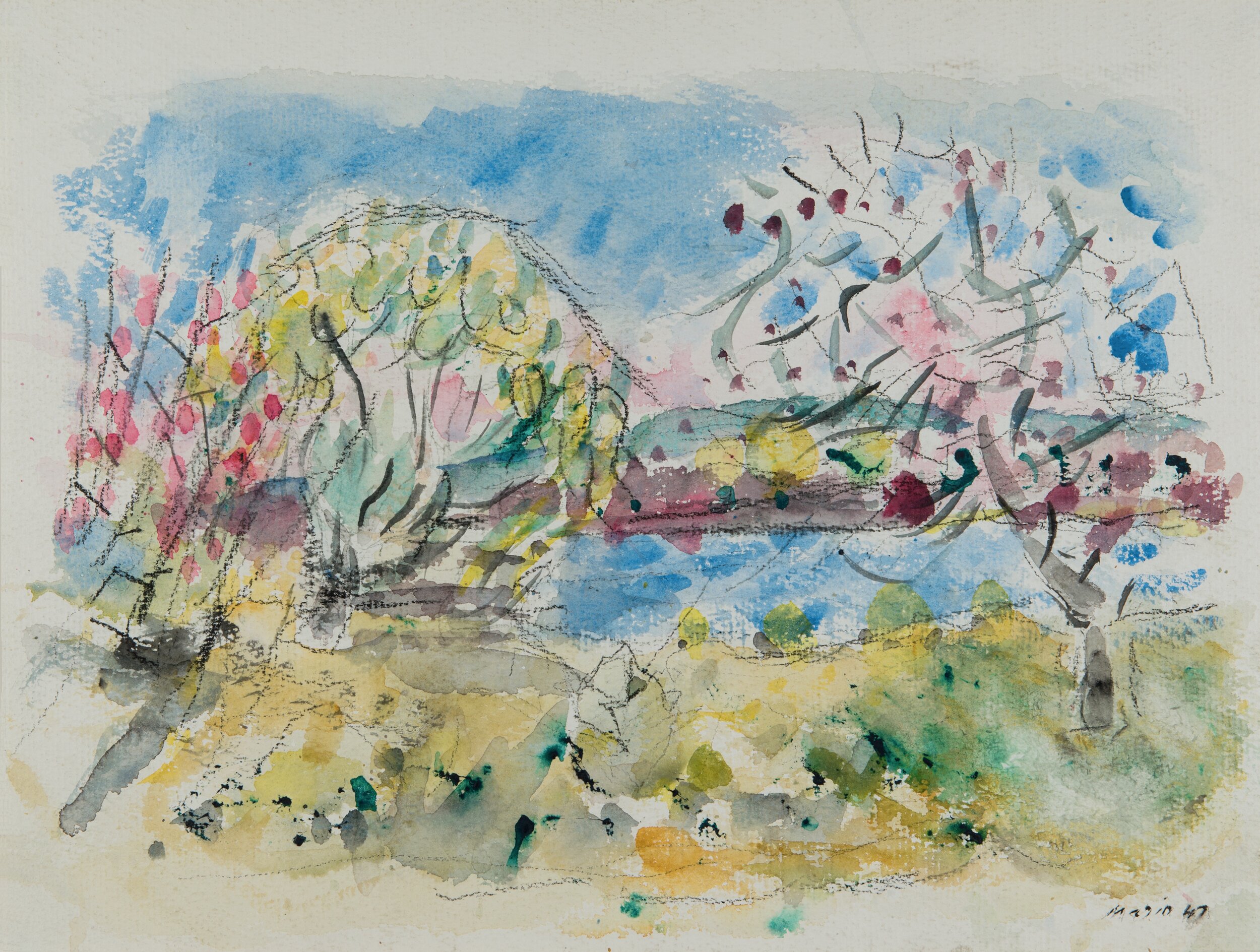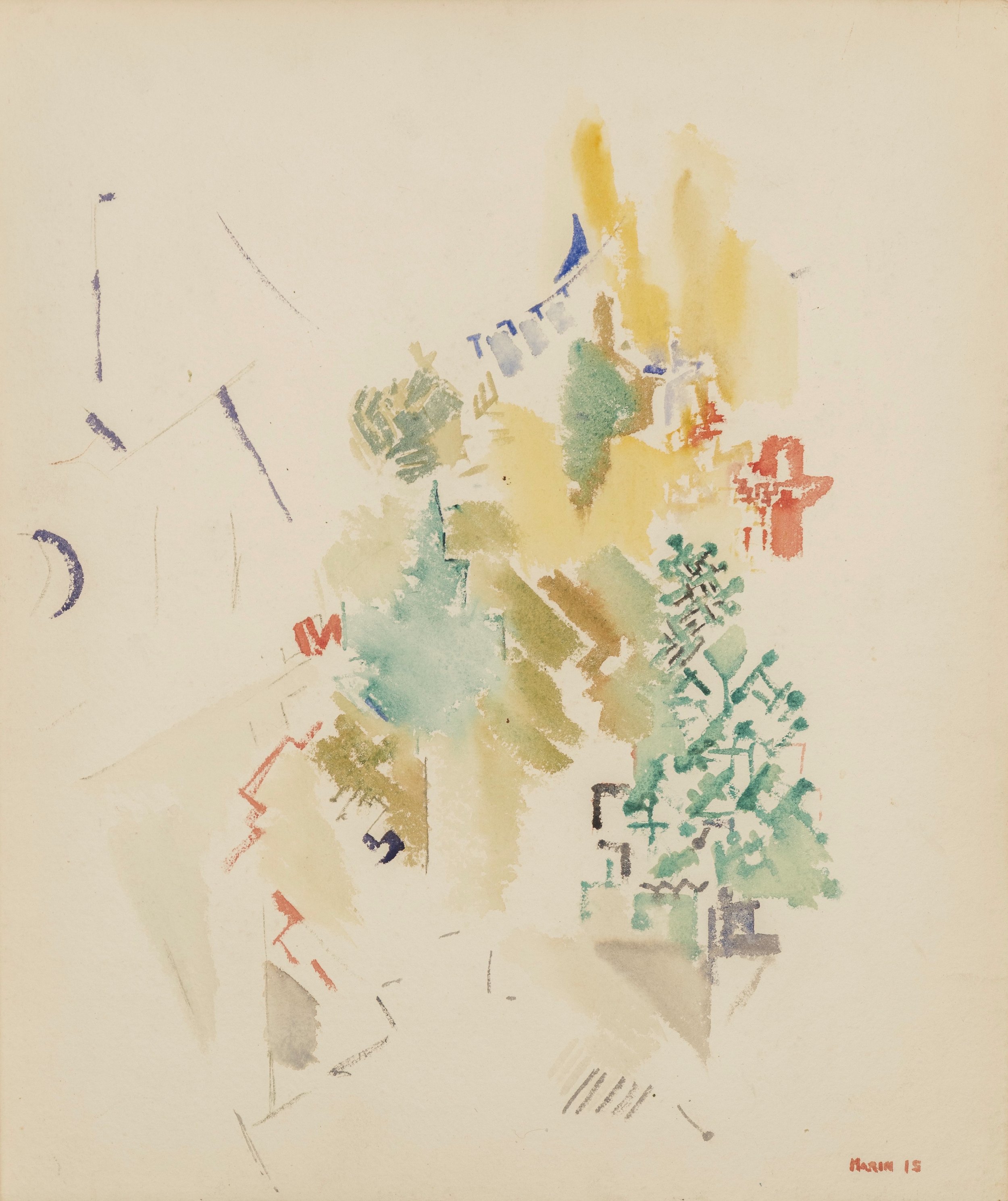John Marin (1870-1953)
About John Marin
One of the foremost members of the group of artists around Alfred Stieglitz, Marin created paintings that are among the most ground breaking and influential of his generation. His oils, watercolors, and drawings, produced during the early years of the 20th century, stand today as icons of American modernism. Working with the artist’s estate, Meredith Ward Fine Art holds an unparalleled selection of Marin’s work from all periods in all media.
Marin explored the idea of movement in his paintings more consistently than any other American artist of the twentieth century. From the wind-swept coast of Maine to the hustle-bustle of New York City, the subjects Marin chose to paint convey a sense of motion. Marin saw movement in his paintings as a sign of modernity, a means of capturing the quickening pace of life in the twentieth century. More importantly for him, however, was movement as a manifestation of the pulse and rhythm of life itself. Scholars including Sheldon Reich and Ruth Fine have suggested that Marin’s interest in exploring movement was sparked during years in Paris, where he may have seen the work of Robert Delaunay. Marin’s interest, though, seems to have been a celebration of a vitality that was essentially humanistic, rather than a reflection of any new machine-age faith. What interested him was the life of the city and the people who live in it.
In 1909, Marin received his first exhibition at Alfred Stieglitz’s 291 gallery. From that point on, until his death in 1946, Stieglitz showed Marin's work almost every year in one of his galleries.
Marin spent his first summer in Maine in 1914 and almost immediately, the rocky coast there became one of his favorite subjects. Over the years, he became intimately familiar with the many moods of the sea and sky, and developed an uncanny ability to capture the spirit of the place.
By the early 1920s, John Marin had crystallized his style of painting and was reaching new artistic heights in his work. Marin’s earlier work had certainly evinced a strong sense of energy and dynamism but a small the paintings of the 1920s demonstrate how far he had come in unleashing the expressive power of the medium. As Alexander Eliot has observed (Three Hundred Years of American Painting, 1957, p. 190):
"The work of many landscape painters looks as if it had been laboriously traced on a pane of glass set between the artist and the scene. Marin broke the glass and let day light and fresh air flood in ... The curving calligraphic lines following the rhythm rather than the contours of what was actually before him, re-creating the contradictory pulls and thrusts of city, sea, tide, wind, boats, tree, and mountains."
Marin spent the summers of 1929 and 1930 in New Mexico. This was a significant departure for him, as he had up to that time spent almost every summer along the coast of Maine. The southwestern sojourns proved to be extremely fruitful, and produced some of the most innovative and dynamic works of his career. Marin traveled to Taos at the urging of Rebecca Strand, Georgia O’Keeffe, and Mabel Dodge Luhan. His good friend, the photographer Paul Strand was also there. Marin stayed at the Luhan estate for several months each of the two summers, and drove out into the landscape each day.
After 1930, Marin resumed his habit of spending winters in New Jersey and summers in Maine. In the mid-1930s, he turned with a revived interest to painting in oil, and over the next two decades produced some of the most extraordinarily ground-breaking and influential works of his career. It was these late oils that so profoundly impacted the next generation of Abstract Expressionist artists.


